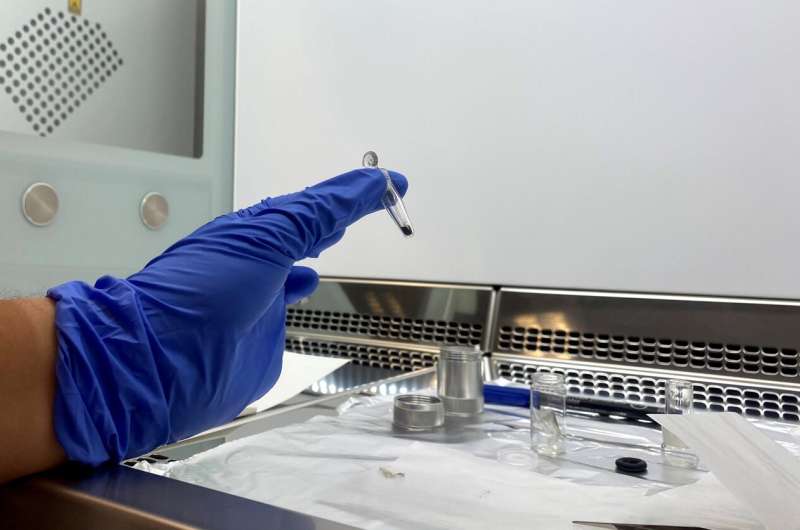A status report will be presented today at the Europlanet Science Congress (EPSC) 2021.
The 2020s promise a bounty of new missions returning planetary samples to Earth for analysis. Scientists can learn a huge amount about planetary bodies by sending remote sensing orbiters, and even more by 'in situ' exploration with landers and rovers. However, sensitive laboratory instruments on Earth can extract information far beyond the reach of current robotic technology, enabling researchers to determine the chemical, isotopic, mineralogical, structural and physical properties of extra-terrestrial material from just a single, tiny sample.
"The SAL facility will allow us to study samples from a macroscopic level down to the nanometric scale and help us answer key question about the formation and evolution of planetary bodies," said Dr. Enrica Bonato from DLR. "Sample return provides us with "ground truth" about the visited body, verifying and validating conclusions that can be drawn by remote sensing. SAL will unlock some really exciting science, like looking for traces of water and organic matter, especially in the samples returned from asteroids. These are remnants of "failed" planets, so provide material that gives insights into the early stages of the Solar System and planetary evolution."
The establishment of SAL has taken three years' planning and the facility will see its first instruments delivered in summer 2022. The state-of-the art equipment will allow researchers to image the rock samples at very high magnification and resolution, as well as to determine the chemical and mineralogical composition in great detail. The laboratory will be classified as a "super-clean" facility, with a thousand times fewer particles per cubic meter permitted than in a standard clean room. Protective equipment will be worn by everyone entering in order to keep the environment as clean as possible, and SAL will be equipped with glove boxes for handling and preparation of the samples. All samples will be stored under dry nitrogen and transported between the instruments in dry nitrogen filled containers.
Together with other laboratory facilities within the Institute of Planetary Research (including the Planetary Spectroscopy Laboratory and Planetary Analogue Simulation Laboratory), the new SAL will be open to the scientific community for "transnational access" visits supported through the Europlanet 2024 Research Infrastructure.
The first studies at SAL will relate to two small, carbonaceous asteroids: Ryugu, samples from which were returned by JAXA's Hayabusa2 mission in late 2020, and Bennu, from which NASA's OSIRIS-REx mission will deliver samples back to Earth in 2023.
"Hayabusa2 and OSIRIS-REx are in many ways sister missions, both in the kind of body being visited, and in the close cooperation of scientists and the sponsoring agencies. International collaboration is an important part of the sample return story, and becomes even more key when it comes to analysis," said Bonato. "We are also looking forward to receiving (and potentially curating) samples from Mars's moon, Phobos, returned by JAXA's Martian Moons eXploration (MMX) mission late in the decade. We also hope to receive samples at SAL from the Moon in the early part of the decade from China's Chang'E 5 and 6 missions."
A collaboration with the Natural History Museum and the Helmholtz Center Berlin in Berlin aims to establish an excellence center for sample analysis in Berlin within the next 5-10 years. In the future, SAL could be expanded into a full curation facility.
"Returned samples can be preserved for decades and used by future generations to answer questions we haven't even thought of yet using laboratory instruments that haven't even been imagined," added Jörn Helbert, Department Head of Planetary Laboratories at DLR.
Explore further



